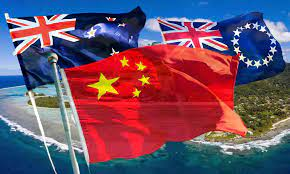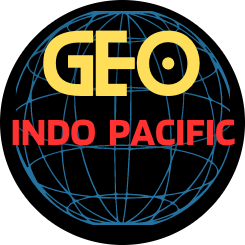
U.S., China, India, Japan, and others, requires a delicate balance of deterrence, diplomacy, and regional cooperation. The region is a hotspot for strategic competition, territorial disputes (e.g., South China Sea, Taiwan), and economic influence struggles. The Indo-Pacific region has emerged as a focal point of geopolitical strategy, driven by escalating tensions, economic competition, and military posturing. Balancing deterrence in this region is critical to maintaining stability while avoiding direct conflict. This requires a nuanced approach that integrates diplomatic engagement, economic partnerships, and military readiness. Below are key strategies for managing these rivalries effectively:
1. Strengthening Alliances and Partnerships
- U.S.-Led Alliances: Reinforce partnerships like the Quad (U.S., Japan, India, Australia) and AUKUS (U.S., UK, Australia) to ensure a credible deterrent against aggression.
- ASEAN Centrality: Support ASEAN-led mechanisms (e.g., East Asia Summit, ASEAN Regional Forum) to maintain regional stability without overt domination by any single power.
- India’s Strategic Role: Encourage India’s involvement as a counterbalance to China through initiatives like the Indo-Pacific Oceans Initiative (IPOI) and deeper security ties with Japan and Australia.
2. Economic Engagement & Strategic Competition
- Diversify Supply Chains: Reduce over-reliance on China through initiatives like the Indo-Pacific Economic Framework (IPEF) and friendshoring/nearshoring.
- Infrastructure Alternatives: Counter China’s Belt and Road Initiative (BRI) with transparent alternatives like the Partnership for Global Infrastructure and Investment (PGII) and Japan’s Free and Open Indo-Pacific (FOIP).
3. Crisis Management & Confidence-Building Measures (CBMs)
- Maritime Security Protocols: Establish rules of engagement to prevent accidental clashes (e.g., U.S.-China Incidents at Sea Agreement (INCSEA)-style mechanisms for other regional actors).
- Hotlines & Dialogue: Maintain military-to-military communication channels between rivals (e.g., U.S.-China, India-China) to de-escalate tensions.
- Freedom of Navigation Operations (FONOPs): Continue lawful FONOPs to challenge excessive maritime claims while avoiding unnecessary provocations.
4. Managing the Taiwan Issue
- Strategic Ambiguity vs. Clarity: The U.S. should balance deterrence (arming Taiwan) with diplomacy to prevent a catastrophic conflict.
- Regional Stakeholder Coordination: Ensure Japan, Australia, and others are aligned on contingency plans without escalating rhetoric.
5. Addressing Non-Traditional Security Threats
- Climate Change & Disaster Response: Collaborate on humanitarian assistance (HA/DR) to build trust (e.g., regional coast guard cooperation).
- Cybersecurity & Hybrid Threats: Establish norms against cyberattacks on critical infrastructure and disinformation campaigns.
6. Engaging China Without Appeasement
- Competitive Coexistence: Pursue selective cooperation (e.g., climate, piracy) while firmly countering coercion in the South China Sea or against Taiwan.
- Economic Leverage: Use targeted sanctions (e.g., semiconductor controls) to limit China’s military modernization without triggering full decoupling.
7. Strengthening Regional Defense Capabilities
- Arms Transfers & Joint Exercises: Boost partners’ defenses (e.g., U.S. arming Philippines, Japan exporting defense tech to ASEAN states).
- Anti-Access/Area Denial (A2/AD) Countermeasures: Develop strategies to neutralize China’s A2/AD networks in contested zones.
Conclusion
The Indo-Pacific’s stability depends on deterrence, dialogue, and diversified engagement. While competition is inevitable, preventing outright conflict requires institutionalized crisis management, economic resilience, and a united front among like-minded democracies. The goal should be a “Free and Open Indo-Pacific” where power rivalries are managed without destabilizing the region.
Would you like a deeper dive into any specific aspect (e.g., South China Sea disputes, India-China border tensions, or U.S.-China tech rivalry)?





